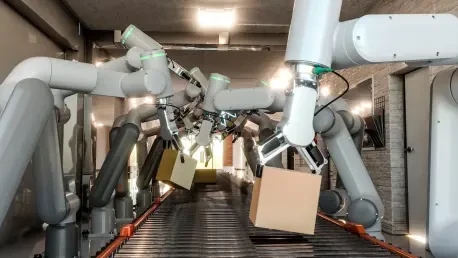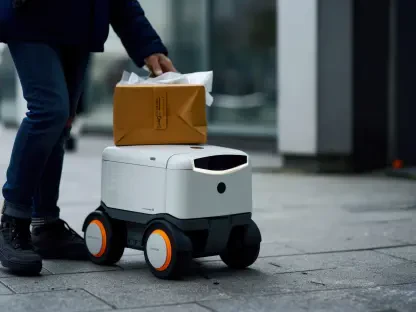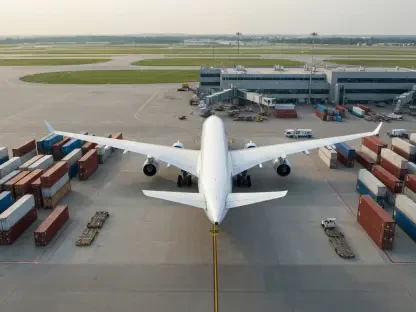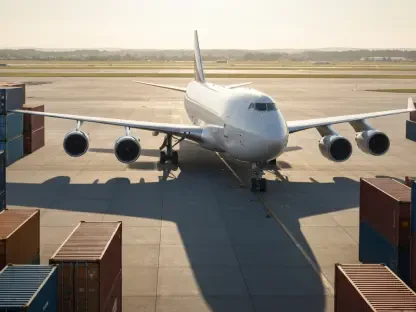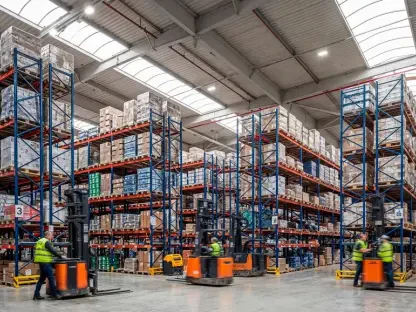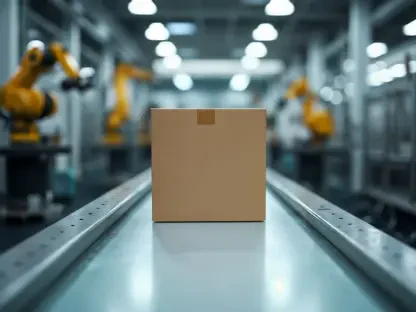Amazon’s adoption of robotics in its logistics technology marks a transformative phase for supply chains around the globe. At the heart of this development is a new 2.8 million-square-foot robotics fulfillment center in Charlton, Massachusetts, exemplifying Amazon’s monumental $300 million investment in the state. This facility stands as a testament to Amazon’s commitment to integrating advanced robotics into its distribution framework, signifying the company’s largest venture in Massachusetts. Packed with robots capable of handling up to 1,500 pounds, the cutting-edge warehouse serves as a vital cog in Amazon’s operational machinery, facilitating the swift processing and dispatching of goods widely varying from electronics to household items. The Charlton center is an impressive logistical feat, housing approximately 32 million items at any one time and fulfilling tens of thousands of customer orders with remarkable efficiency.
The Role of Automation in Supply Chains
The infusion of automation within Amazon’s operations reflects its relentless pursuit of increased efficiency and reduced reliance on manual labor. This strategic focus on robotics is not merely about technological prowess; it’s fundamentally reshaping the way supply chains function globally. Deploying a fleet of specialized robots like “Tipper” and the recently unveiled “Vulcan” with tactile sensing abilities, Amazon is methodically dismantling traditional warehousing paradigms. These innovations are designed to optimize package handling and inventory management, drastically trimming time on manual tasks and bolstering productivity across the board. Amazon’s robotic integration is not limited to Charlton; it is echoed nationwide as the company has strategically invested $23 billion in Massachusetts alone, with similar developments ongoing elsewhere across the U.S., such as Virginia and North Carolina. This national expansion reflects Amazon’s overarching strategy to use robots to harmoniously blend with human labor, creating a more agile and responsive logistics model.
The benefits of this robotic revolution are manifold. Increased automation has allowed Amazon to significantly enhance delivery speeds, taking real-time inventory management to unprecedented levels of precision. Consequently, the demands and expectations of consumers in an instant-gratification-driven market are met with unparalleled efficiency. While the transition to automated operations involves reducing manual tasks, it does not entirely replace human roles. Instead, Amazon’s model is creating new employment opportunities, with the Charlton facility alone supporting over 1,000 jobs. However, these roles are increasingly focused on supervisory and maintenance positions, underscoring a shift in workforce demands aligned with the digital transformation of logistics. The approach underscores the subtle but significant societal implications of such advancements, which may redefine labor markets and job descriptions.
A Benchmark in Industry Transformation
Amazon’s leadership in robotics does more than just enhance its own supply chain—it’s setting a new industry benchmark. This shift is driving broader changes across the logistics sector, as companies worldwide re-evaluate their processes under Amazon’s innovative lens. The transition not only fortifies Amazon’s competitive edge but also encourages similar transformations in other e-commerce and logistics firms. The effective balance between human and robotic collaboration maximizes operational efficiency while sustaining the competitive ambitions of the bustling e-commerce arena. This paradigm is indicative of wider industry trends, where automation serves as a critical lever for ensuring sustainable growth and competitive differentiation.
The ripple effect of Amazon’s investment reaches beyond immediate logistics improvements. It poses a fundamental question to traditional supply chain models that have long relied on human labor. As robots become indispensable components in distribution networks, companies are encouraged to rethink supply chain strategies focused on agility and sustainability. This shift aligns with a broader trend of digital transformation sweeping industries worldwide, as businesses harness technology to continuously improve service offerings and adapt to rapidly changing market conditions. Through these investments and innovations, Amazon positions itself as a pivotal navigator in the evolving landscape of supply chain management, prompting industry peers to follow suit or risk obsolescence.
Future Implications and Strategic Directions
Amazon’s commitment to integrating automation into its processes showcases its relentless drive for enhanced efficiency and a reduced need for manual labor. This focus on robotics isn’t solely about advancing technology; it’s transforming global supply chains. By deploying specially designed robots like “Tipper” and the newly introduced “Vulcan,” which have tactile sensing capabilities, Amazon is revolutionizing traditional warehousing. These innovations improve package handling and inventory, sharply cutting time needed for manual tasks and boosting productivity. This expansion isn’t isolated; it reflects a nationwide strategy, with Amazon investing $23 billion in Massachusetts and developing similar projects in states like Virginia and North Carolina. These efforts merge robots with human labor to create a responsive logistics model. Automation enhances delivery speeds and real-time inventory accuracy, meeting consumer demands efficiently. While manual roles are reduced, new jobs in supervision and maintenance emerge, shaping future workforce trends and labor markets.
